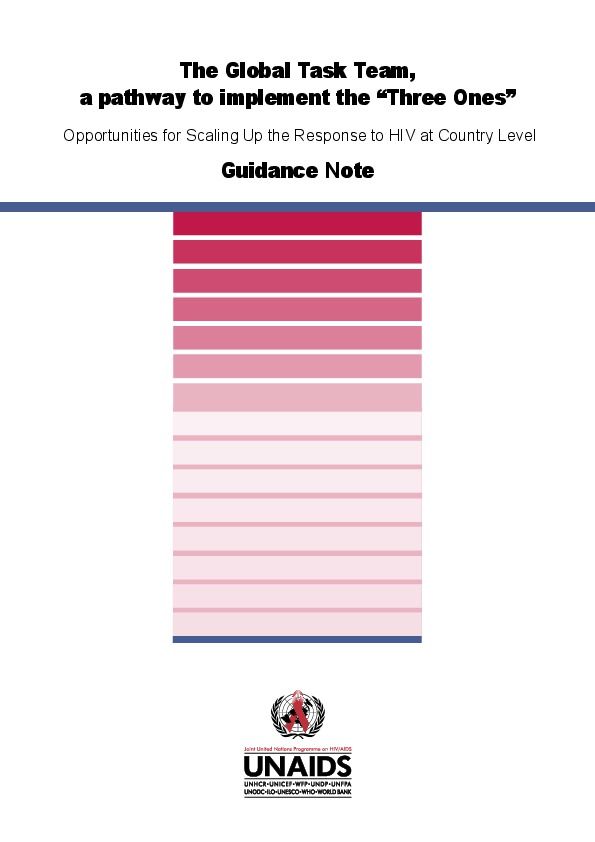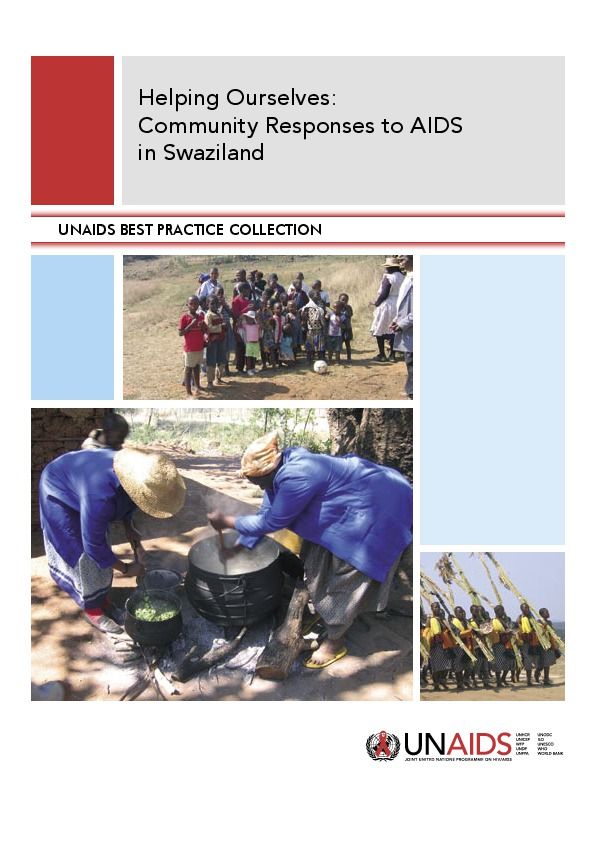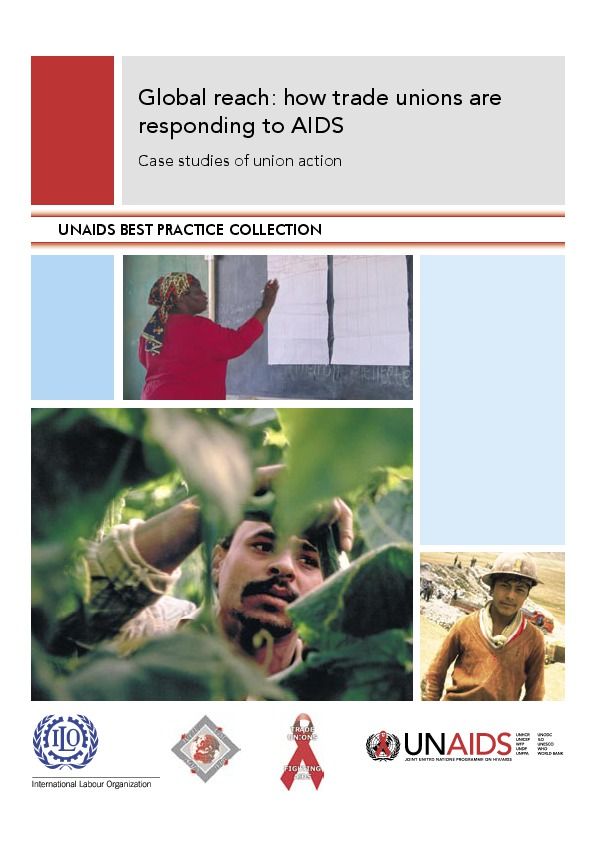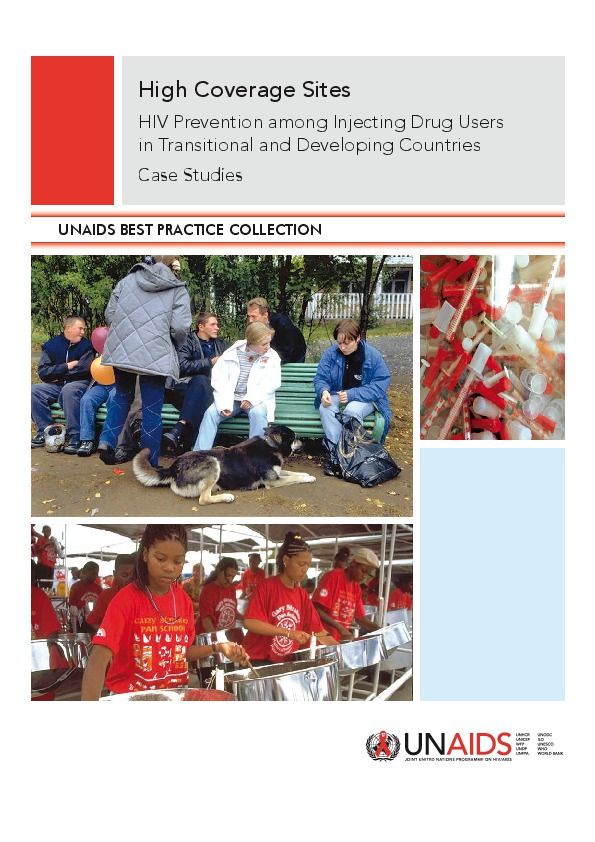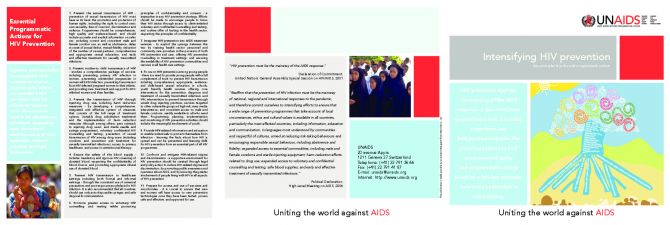Documents
Global reach: how trade unions are responding to AIDS
22 August 2006
This Best Practice report shows how the power of working people can be harnessed in the response to AIDS. Eleven case studies from different settings show how trade unions are mounting bold, imaginative responses to HIV in the workplace: challenging stigma and discrimination, addressing the factors that increase vulnerability and risk, educating their members on HIV transmission prevention, providing care and treatment, and building worldwide coalitions that campaign for more to be done to tackle the disease. The report contains a wealth of practical experience that trade unions, employers, governments and nongovernmental organizations can draw on when developing workplace responses to AIDS.
Documents
High Coverage Sites: HIV Prevention among Injecting Drug Users in Transitional and Developing Countries
16 September 2006
UNAIDS commissioned this report to investigate programmes and sites in low-income and transitional countries which were regarded by international authorities as ‘high coverage sites’ – that is, where more than 50% of injecting drug users had been reached by one or more
HIV-prevention interventions. The most significant finding is that high level coverage can be attained by interventions addressing HIV among injecting drug users in developing and transitional countries. The seven case studies each include a description of the development of the programme and features of the services provided, an estimation of programme coverage, factors that enabled high coverage, and a discussion of ways to maintain and expand coverage.
Documents
Intensifying HIV prevention
03 October 2006
Evidence and knowledge base suggests that a certain number of programmatic actions are essential if HIV prevention is to be effectively taken to scale. These actions need to be adapted and prioritized, depending upon the context, evolving nature of local epidemics, national priorities and legal frameworks.
Documents
Newsletter: The Global Coalition of women and AIDS – issue 5
03 October 2006
The AIDS epidemic is taking a devastating toll on families
and communities worldwide. In its wake lies a growing
burden of caring for the sick, the dying, and those left
behind. In countries hardest hit, most of the care for people living with HIV takes place in the home, and up to 90% of that is provided by women and girls.
Documents
Setting National Targets for Moving Towards Universal Access
06 October 2006
This document provides operational guidance to country-level partners and UN staff to facilitate the next phase of the country-level consultative process on scaling up towards universal access to prevention, treatment, care and support services. It concerns the setting of ambitious targets for the national HIV response to achieve by 2008 and 2010, and builds on previous guidelines.
Documents
Collaborating with Traditional Healers for HIV Prevention and Care in sub-Saharan Africa: suggestions for Programme Managers and Field Workers
20 October 2006
These Guidelines are designed to assist government officials, policy-makers, programme managers, trainers, and health workers in bridging the gap between traditional and biomedical health systems or in scaling up existing initiatives. The Guidelines will help those concerned to
envision, plan, design, implement, evaluate and scale up initiatives that involve collaborating with traditional healers for HIV transmission prevention and care in sub-Saharan Africa. The ultimate goal of this effort is to improve access to, and quality of, health services for the clients of both systems.

